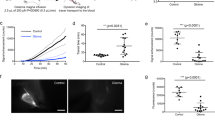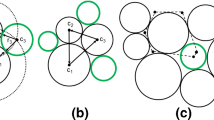Abstract
High grade astrocytomas remain incurable even though thesetumors often appear localized on modern imaging studies, rarely metastasize to systemic sites, and can be aggressivelytreated with surgery and radiation therapy. Recent data suggestthat the dissemination of astrocytoma cells along white matter tracts to distant regions of the brain may be responsible for the poor survival of these patients and the limited impact of local therapies. Movement of astrocytoma cells along these white matter tracts can be active or passive in nature. To study the potential for tumor dissemination by bulk flow of interstitial fluid resulting from peritumoral edema, 20 μL of tritiated inulin, Evans Blue, and rat albumin were injected stereotactically into the right frontal lobe and the left temporal lobe at the gray-white matter junction in Sprague-Dawley rats. Six hours later, the ratswere sacrificed and the brains were removed, frozen and prepared for quantitative autoradiography and histologic analysis. Interstitial flow rates were calculated from the autoradiographs, andflow pathways were determined from the movement of Evans Blue, inulin and histologic data. In each animal injected in the frontal lobe, Evans Blue and inulin were primarily confinedto large ipsilateral white matter tracts and extended from the frontal injection site to the occipital lobe. The averageinterstitial fluid flow rate in the association fibers ofthe external capsule was 0.86 mm/hr. In contrast, the animalsreceiving temporal lobe injections had Evans Blue and inulin confined to the temporal lobe. The average interstitial fluid flow rate inthe white matter tracts of the temporal lobe was 0.61 mm/hr.The rapid and preferential flow of interstitial fluid along white matter tracts and the differences in the clearance of extracellular fluid observed between the frontal and temporal lobes may have important clinical implications. These data suggest that aggressive treatment of peritumoral edema, expansionof radiotherapy ports, and consideration of the location of the tumor in treatment planning may improve therapeutic outcomes for some patients.An improved understanding of the mechanisms of tumor dissemination is crucial to designing more effective therapeutic approaches for patients with this devastating malignancy.
Similar content being viewed by others
References
Curran WJ, Scott CB, Horton J et al.: Recursive partitioning analysis of prognostic factors in three radiation therapy oncology group malignant glioma trials. J Natl Cancer Inst 85: 704–710, 1993
American Cancer Society: Cancer facts and figures. American Cancer Society, Atlanta, GA, 1994
Lesser GJ, Grossman SA: The chemotherapy of primary brain tumors. Cancer Treat Rev 19: 261–281, 1993
Adjuvant and neoadjuvant treatment for primary brain tumors in adults. Seminars in Oncology 22: 530–539, 1995
Hochberg FH, Pruitt A: Assumptions in the radiotherapy of glioblastoma. Neurology 30: 907–911, 1980
Halperin EC, Burger PC, Bullard DE: The fallacy of the localized supratentorial malignant glioma. Int J Radiat Oncol Biol Phys 15: 505–509, 1988
Burger PC, Dubois PJ, Schold SC et al.: Computerized tomographic and pathologic studies of untreated, quiescent, and recurrent glioblastoma multiforme. J Neurosurg 58: 159–169, 1983
Rosenblum M, Eisenberg A, Norman D: Brain tumor invasion: clinical patterns of malignant astrocytoma spread. Proc Am Soc Clin Oncol 11: 148, 1992
Wie BA, Grossman SA, Wharam MD, Chun M: Dissemination of high grade astrocytomas along white matter tracts: Observations and therapeutic implications. Proc Am Soc Clin Oncol 12: 177, 1993
Bernstein JJ, Goldgerg W, Laws ER: Human malignant astrocytoma xenografts migrate in rat brain: A model for central nervous system cancer research. J Neurosci Res 22: 134–144, 1989
Bernstein JJ, Goldberg WJ, Laws ER et al.: C6 glioma cell invasion and migration of rat brain after neural homografting: Ultrastructure. Neurosurg 26: 622–628, 1990
Goldberg WJ, Laws ER, Bernstein JJ: Int J Dev Neuro Sci 9: 427–437, 1991
Pedersen P-H, Marienhagen K, Mork S, Bjerkvig R: Migratory pattern of fetal rat brain cells and human glioma cells in the adult rat brain. Cancer Res 53: 5158–5165, 1993
Cserr HF, Ostrach LH: Bulk flow of interstitial fluid after intracranial injection of blue dextran 2000. Exp Neurol 45: 50–60, 1974
Dunker RO, Harris AB, Jenkins DP: The kinetics of horseradish peroxidase migration through cerebral cortex. Brain Res 118: 199–217, 1976
Long DM, Hartmann JF, French LA: The response of human cerebral edema to glucocorticoid administration. An electron microscopic study. Neurology 16: 521–528, 1966
Ohata K, Marmarou A, Povlishock JT: An immunocytochemical study of protein clearance in brain infusion edema. Acta Neuropathol 81: 162–177, 1990
Reulen HJ, Tsuyumu M, Tack A, Fenske AR, Prioleau GR: Clearance of edema fluid into cerebrospinal fluid. A mechanism for the resolution of vasogenic brain edema. J Neurosurg 48: 754–764, 1978
Rennels ML, Gregory TF, Blaumanis OR et al.: Evidence for a ‘aravascular’ fluid circulation in the mammalian central nervous system, provided by the rapid distribution of tracer protein through the brain from the subarachnoid space. Brain Res 326: 47–63, 1985
Wagner HJ, Pilgrim C, Brandl J: Penetration and removal of horseradish peroxidase injected into the cerebrospinal fluid: Role of perivascular spaces and microglia. Acta Neuropath 27: 299–315, 1974
Tsuyumu M, Reulen HJ, Prioleau G: Dynamics of formation and resolution of vasogenic oedema. I. Measurement of oedema clearance into ventricular CSF. Acta Neurochi (Wien) 57: 1–13, 1981
Ohata K, Maramarou A: Clearance of brain edema and macromolecules through cortical extracellular space. J Neurosurg 77: 387–396, 1992
Rennels ML, Blaumanis OR, Grady PA: Rapid solute transport throughout the brain via perivascular fluid pathways. Adv Neurol 52: 431–439, 1990
Blaumanis OR, Rennels ML, Grady PA: Focal cerebral edema impedes convective fluid tracer movement through perivascular pathways in cat brain. Adv Neurol 52: 385–389, 1990
Dunker RO: In: Schulman K (ed) Intracranial Pressure IV, Springer-Verlag, Berlin/New York 475–477, 1980
Reulen HJ, Graham R, Fenske AR et al.: Dynamics of Brain Edema, Springer-Verlag, Berlin/Heidelberg/New York 103–112, 1976
Reulen HJ, Graham R, Spatz M et al.: Role of pressure gradients and bulk flow in dynamics of vasogenic brain edema. J Neurosurg 46: 24–35, 1977
Sneed PK, Gutin PH, Larson DA et al.: Patterns of recurrence of glioblastoma multiforme after external irradiation followed by implant boost. Int J Radiat Oncol Biol Phys 29: 719–727, 1994
Agbi CB, Bernstein M, Laperriere N et al.: Patterns of recurrence of malignant astrocytoma following stereotactic interstitial brachytherapy with iodine-125 implants. Int J Radiat Oncol Biol Phys 23: 321–326, 1992
Burger PC, Heinz BR, Shibata T et al.: Topographic anatomy and computerized tomographic correlations in the untreated glioblastoma multiforme. J Neurosurg 68: 698–704, 1988
Author information
Authors and Affiliations
Rights and permissions
About this article
Cite this article
Geer, C.P., Grossman, S.A. Interstitial fluid flow along white matter tracts: A potentially important mechanism for the dissemination of primary brain tumors. J Neurooncol 32, 193–201 (1997). https://doi.org/10.1023/A:1005761031077
Issue Date:
DOI: https://doi.org/10.1023/A:1005761031077




